
When you think of playing the ukulele, you probably imagine learning the notes, discovering strumming patterns, and performing your favorite songs. However, with exploring the ukulele comes learning to take care of it, too. This involves changing ukulele strings out every now and then.
Musicians need to restring ukuleles when the strings start to sound dull due to wear and tear. Obviously, you will want to do a ukulele string replacement when a string snaps, but instead of just replacing that one string, you will likely want to replace all of them because, one by one, they will eventually start to lose their tone. Not to mention, if you only change that one new string, it will sound unnecessarily brighter than the rest.
So how often will you need to replace your strings? This will vary depending on your environment and how often you play, but a good rule of thumb is if you’re performing publicly you should change your strings every one to three months. If you play less frequently as a hobby, you should change them every three to six months. Also, if you break a string you will want to restring your whole set. Another sign you should restring your ukulele is when you notice the strings starting to discolor or fray.
Now that you know when to restring your instrument, you’re probably still wondering how to restring a ukulele. The good news is that it’s a pretty simple task once you get the hang of it. To help, we’ve created a handy guide on how to restring a ukulele with pictures. Follow each step with your instrument in hand, and you’ll know how to string your ukulele in no time!
Here’s How to String A Ukulele in 5 Steps
Step 1 – Unwind and Remove Old Strings
Before you dive into removing and replacing your strings, familiarize yourself with the different ukulele strings first. Be sure you know which string is which and where each string goes. The last thing you want to do is mix up your strings and restring them in the wrong order!
After you know the strings, the next step in how to restring a ukulele by hand is very simple, unless your uke is old and the strings have begun to solidify due to grime and oxidation from the tuning pegs.
(If you find yourself in this situation, it’s best to just clip them off with nail clippers or a pair of wire cutters. But be careful not to harm the wood of the ukulele when doing so).
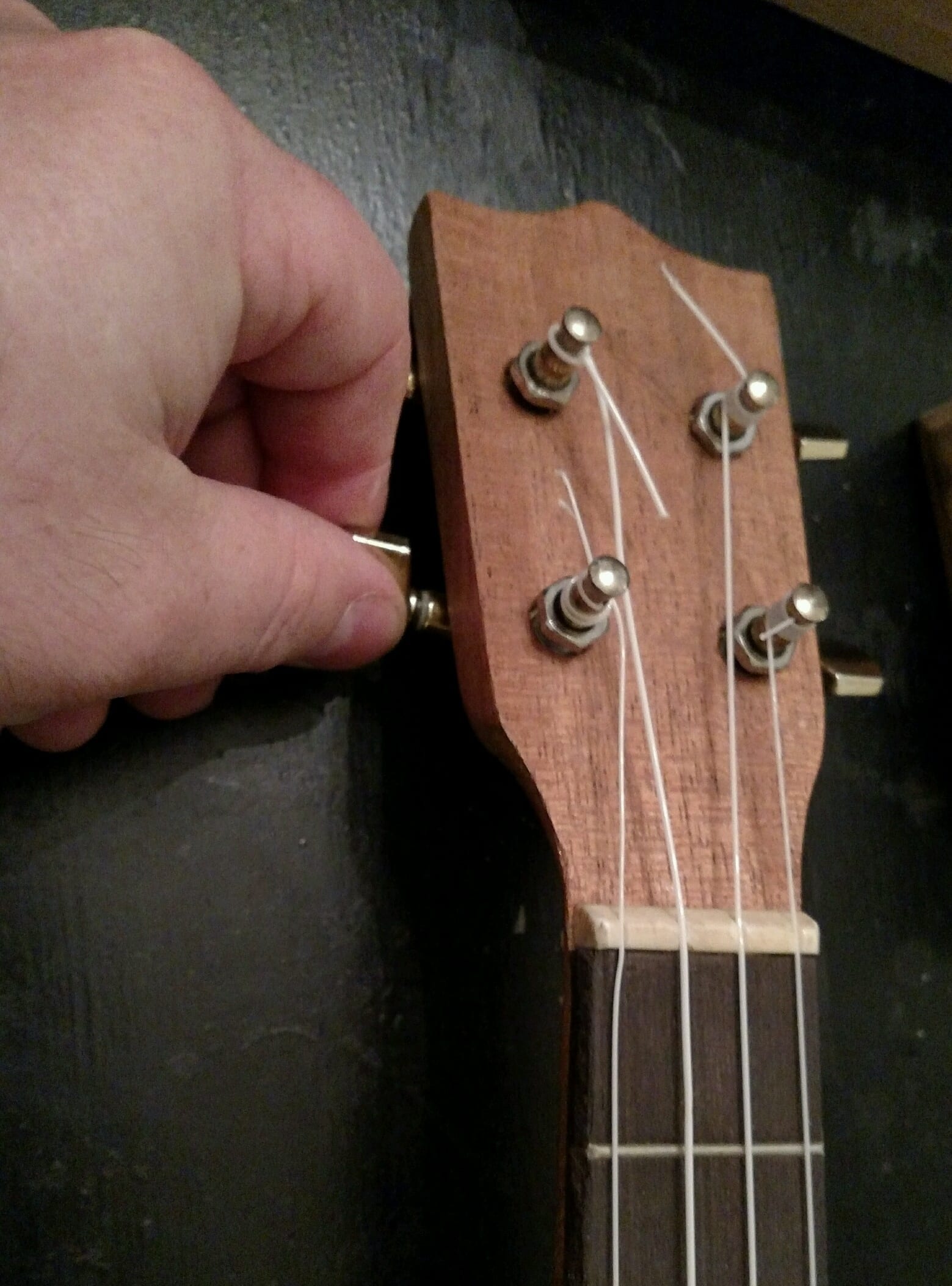
When unwinding the strings on the side of the ukulele that faces the ceiling when you play, you will unwind in a clockwise manner. Whereas, the strings that are on the side facing the floor as you play will need to be unwound in a counter-clockwise manner.
In the photo below you’ll see two different ukuleles. One ukulele uses a knot and slot method of holding the string in place at the bridge. The other uses a traditional, classical guitar style knot to hold the string in place. We’ll go over both in this article.
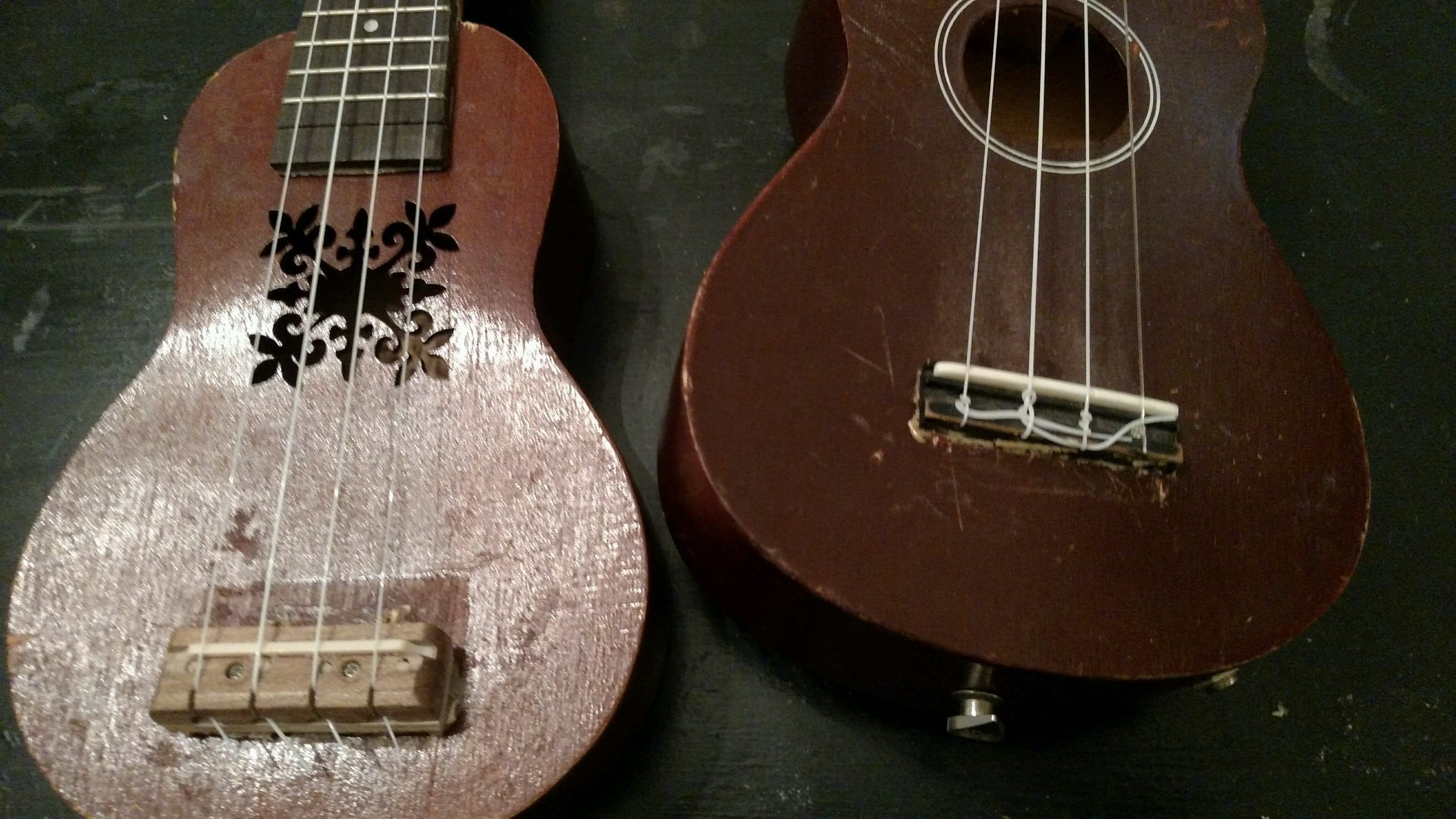
These are the two different types of bridges you may encounter on a ukulele. Check out your bridge once you have the strings off to make sure it doesn’t need to be cleaned or repaired.
Step 2 – Secure New Strings to the Bridge
For this step, you will want to have your new strings handy. A few good brands for ukulele strings are Martin, Aquila, and GHS.
It’s easier to change strings that have a bit of texture to them, rather than strings that have a super smooth finish. Better quality strings will hold the knot that you tie in them. However, with lower quality strings the knot tends to slip apart when you begin to tighten up the string.
Depending on the type of bridge that you have, you will need to use a different method to secure the strings. If you’re not sure where the bridge is or what kind of bridge you have, take a break and get to know the different parts of the ukulele. As you can see in the photograph below, the first style of bridge is relatively easy to work with.
But how do you tie ukulele strings? All you have to do is tie a knot at the end of the string and fit it into the slot of the bridge.
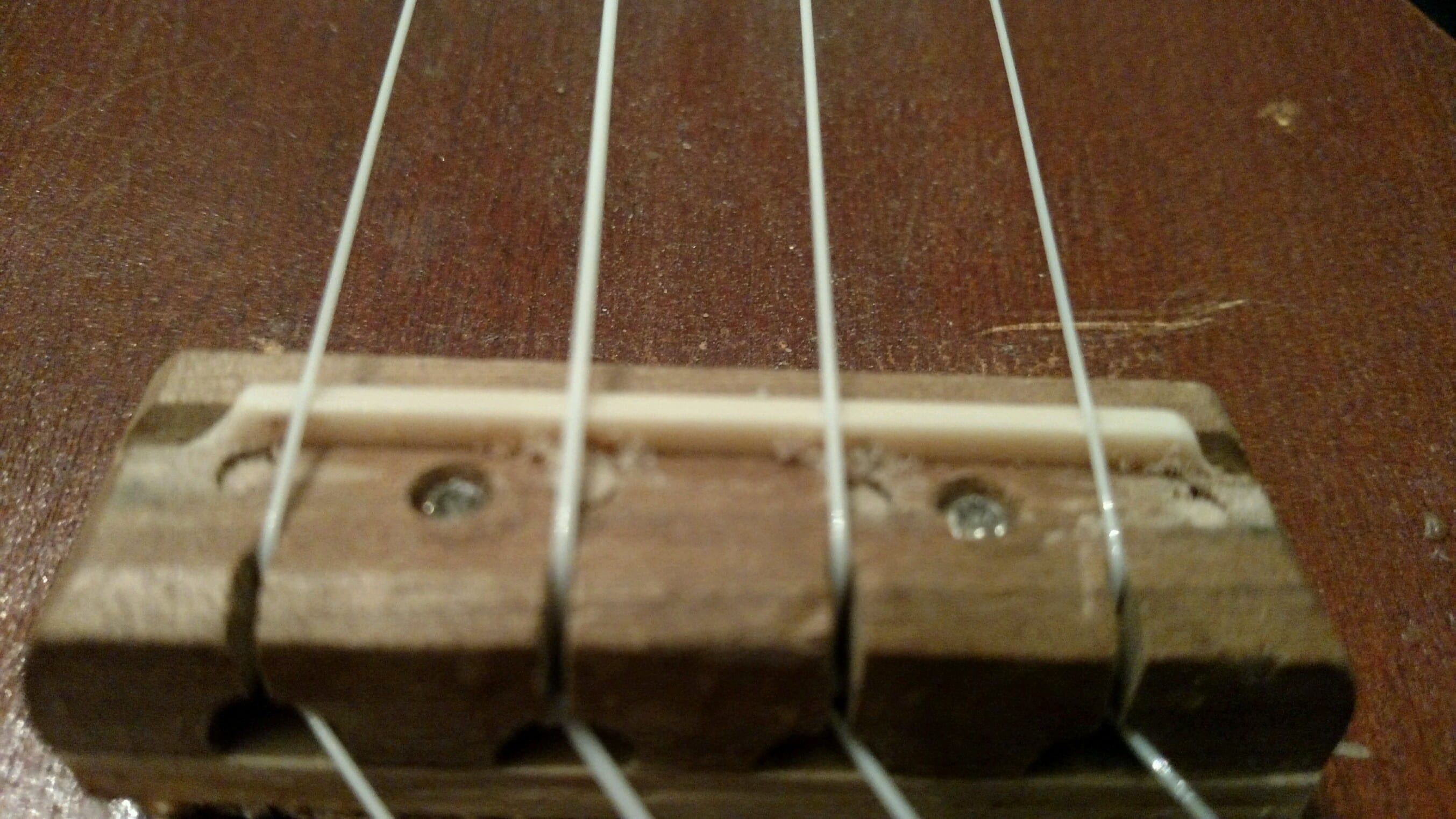
This style of bridge has a slot, and a knot in the string rests under the slot in the small opening at the base of the bridge.
Here is a close-up of the simple knot you can use to secure the bridge end of the string. If you feel like your knot will come apart when you begin to tighten it up, then you might want to double knot it.
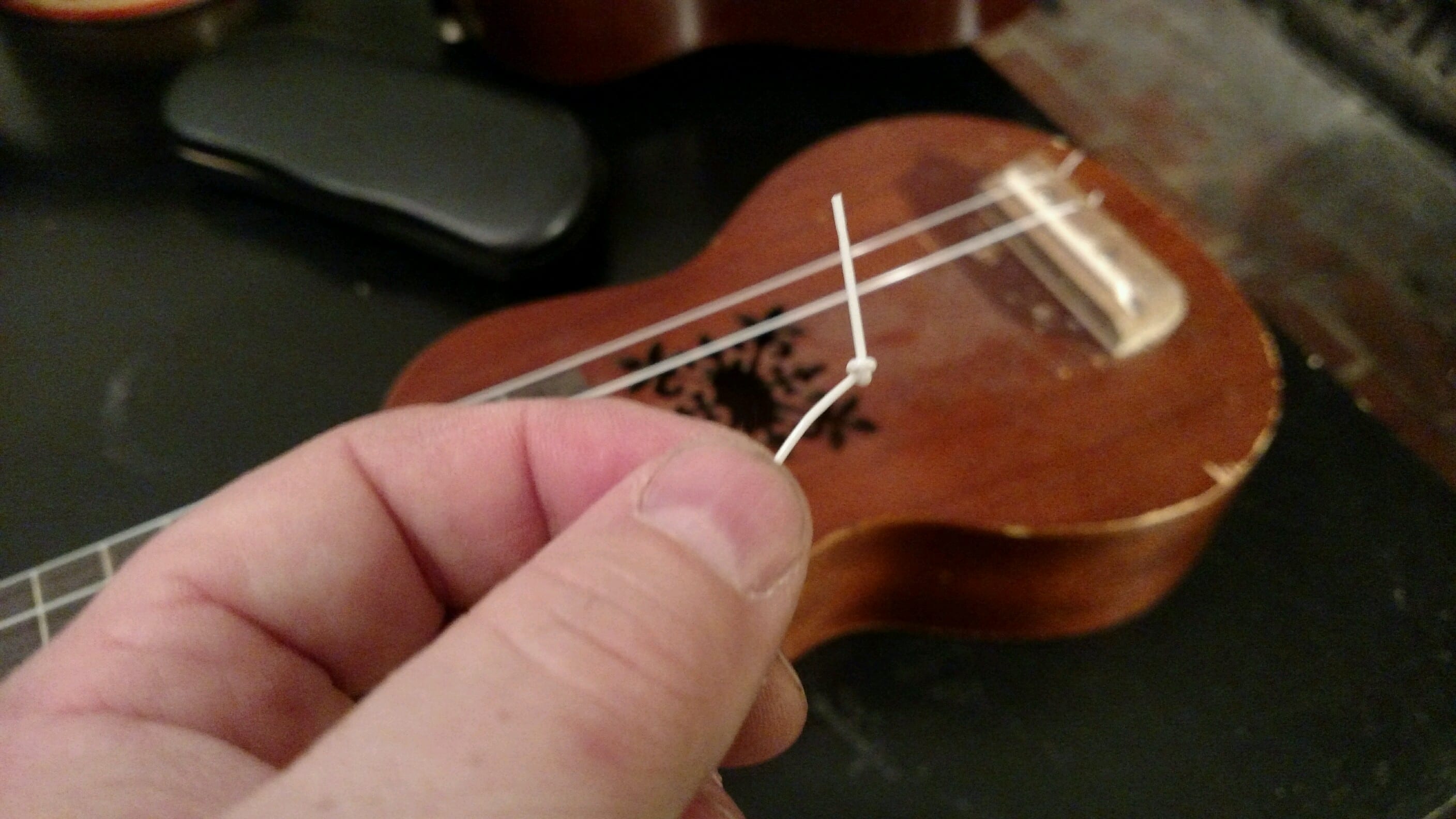
The second style of bridge has a series of four holes drilled through it. The string inserts into the hole from the body side of the bridge, then comes over the top of the bridge and is tied in a double or triple-loop knot along the top surface of the bridge.
So when the knot rests against the saddle (the bone part of the bridge), it gets pulled tight against the saddle when the string is tightened and the loops cinch down – locking the entire knot in place.
The loop is not very difficult to make. You simply feed the free end of the string three times into the knot that you are making. Just remember to leave a little bit of the string out to secure it by tucking it under the next string.
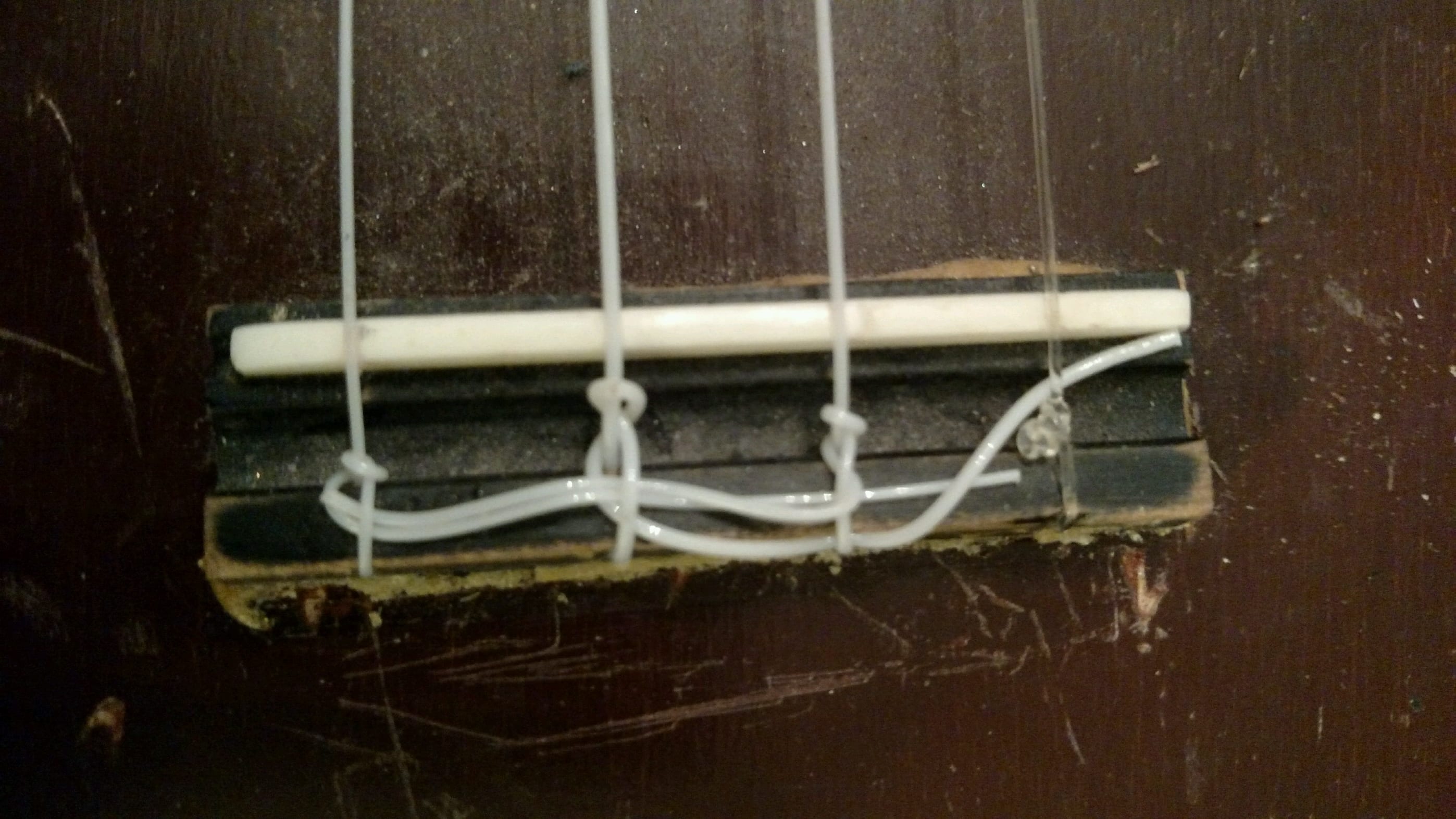
Once you have all the strings secured to the ukulele, tuck the ends of the string underneath the knots to the left and right of the string you are tying. This way, the string ends won’t poke you while you play. This also helps prevent the string from coming unknotted.
After you get all the strings situated the way you want, pull them tight and go onto the next step. Just be sure that none of your knots are actually laying on the saddle itself. You want the string to knot up just behind the saddle.
Step 3 – Feed the Strings Through Tuning Peg Holes
The next step in our guide on how to string a ukulele is to insert each string into its corresponding tuning peg hole. You’ll start this step once each string is secured at the bridge. Make sure to keep one hand on the knots at the bridge just to make sure they don’t unravel.
After the string is through its tuning peg hole, you can begin to wind up the string. Remember, if you are stringing the side that will face the ceiling as you play, you will wind it counterclockwise. Wind it clockwise for the side that will face the floor.
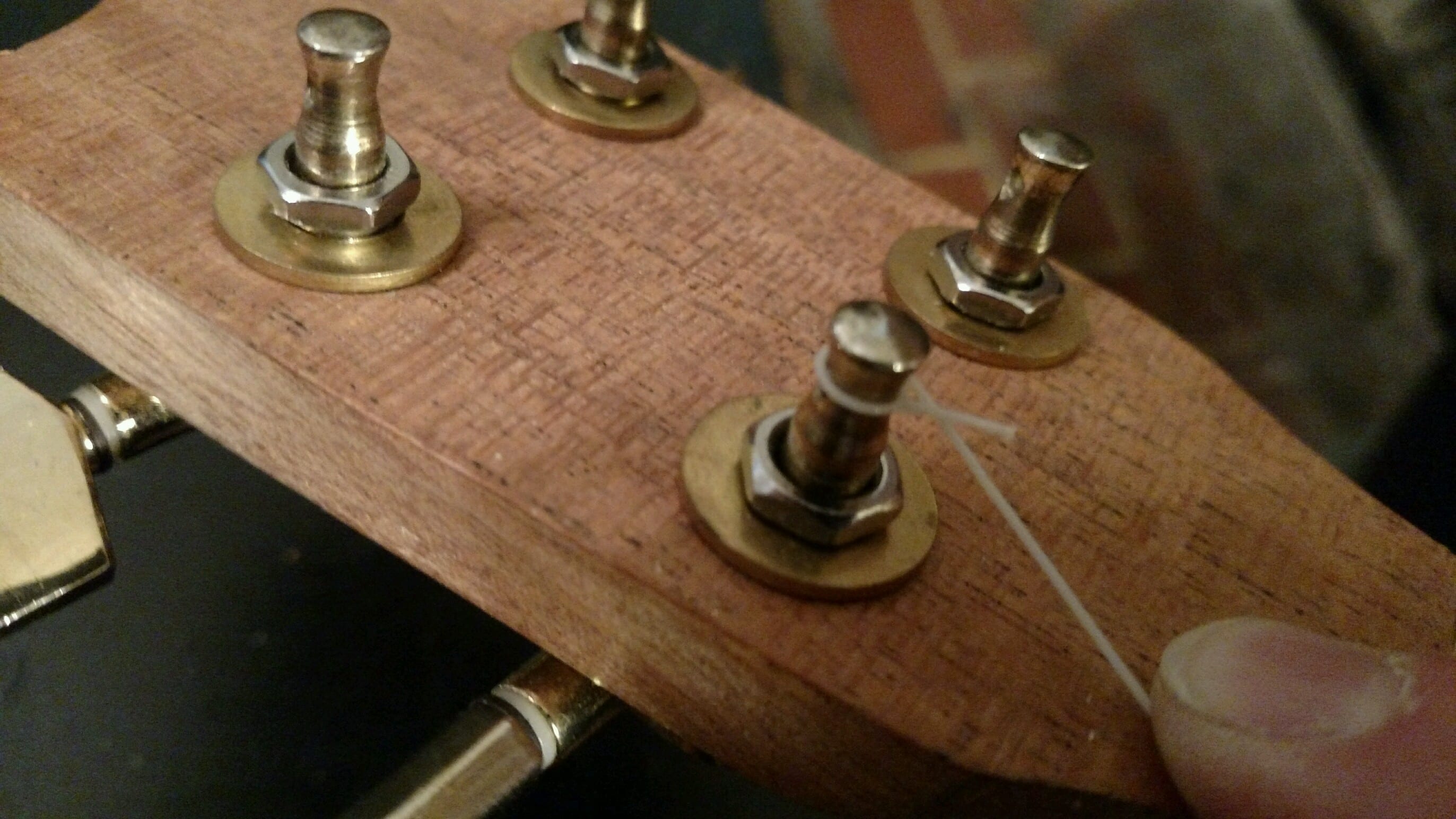
Here is a close-up of the string after the first turn. Notice how the string goes over the end of the tip of the string that is sticking out of the hole. The next turn will go under the string so that it locks the string into place.
Sometimes when using this method the strings will want to slide out of the tuning peg hole. In this case you can always tie a knot in the string at the tuning peg hole, and then tighten the string from there.
Step 4 – Tighten the Strings
You’re one step closer to playing all your favorite ukulele tunes with some fresh strings, but first, you need to tighten up those strings once they’re in place. Do not be concerned at this point about tightening them up to pitch. Just tighten them up until they feel slightly secured and then proceed to the next step.
There are string winders that help make this job a little easier. If you’d like, you can use hand-winding tools or a battery-powered one. Just be careful not to over-tighten the strings to the point that they snap.
While you’re tightening up the strings, you should also keep your eye on the bridge knots and tuning pegs to make sure the ends do not slip out. Once you’ve completed your ukulele string replacement and tightened up your strings, you can move on to tuning your instrument.
Step 5 – Stretch the Strings and Tune to Pitch
The final step for how to restring a ukulele is to stretch the strings to pull out any slack. Once all the strings are on, simply lay the ukulele flat on a table and gently pull each string up a few inches.
Many nylon strings take a long time to stretch into position when you first put them on, and this step makes the tuning process go a lot faster. Just be careful not to pull too much or you can snap the string.
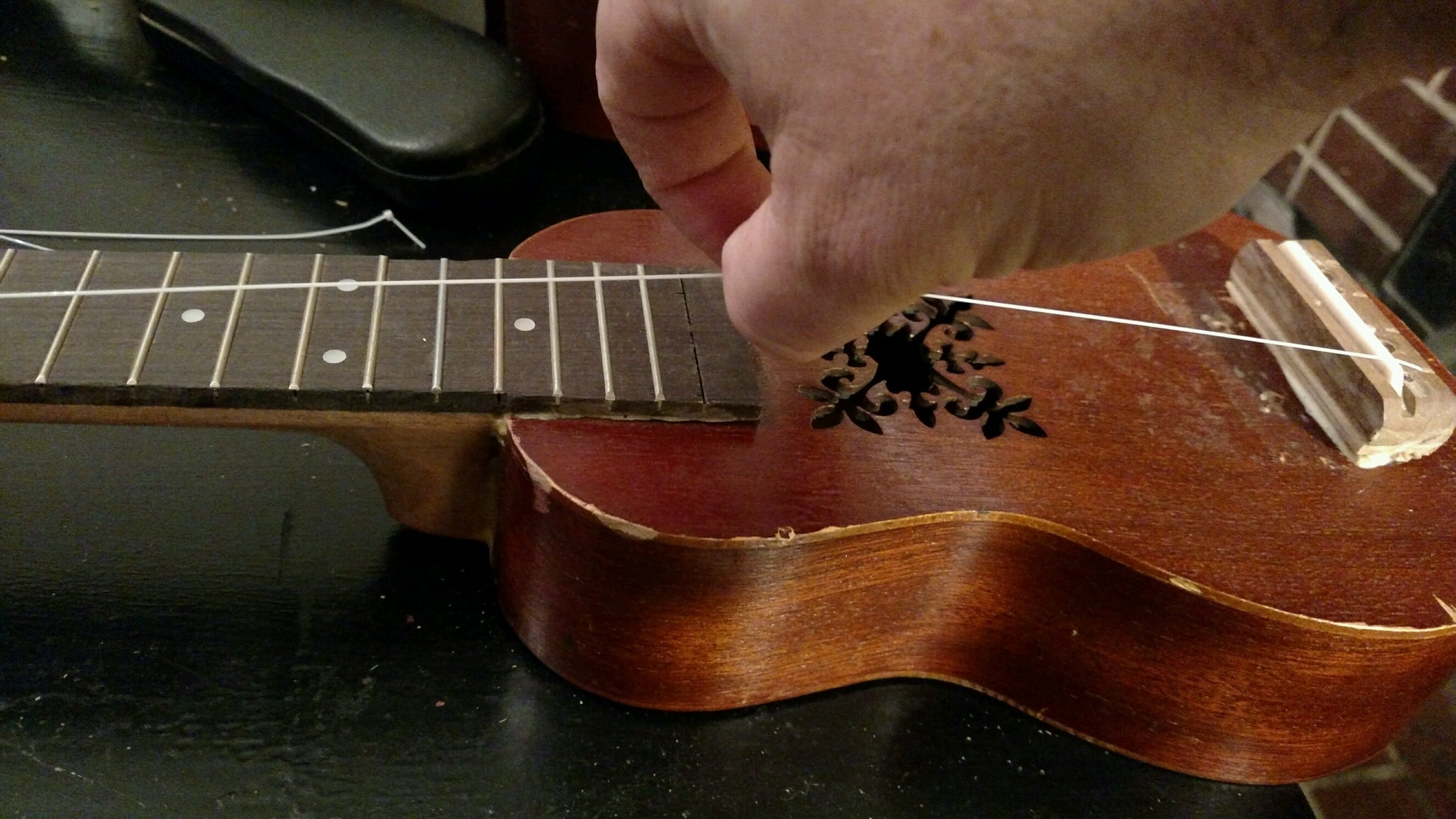
Once you have the tension out of the string, you can re-tighten it. This time, tighten it up to the actual pitch of the string. If you’re a beginner and still getting comfortable with your instrument, check out these tips on how to properly tune your ukulele. With a little practice, you’ll have a freshly tuned instrument in no time!
Every beginning musician finds restringing their instrument a challenge at the start, especially ukulele players because of the material the strings are made of. We hope our guide on how to restring a ukulele with pictures has helped you make sense of it all.
But keep in mind, figuring out how to restring your ukulele likely won’t be the first nor last hurdle you run into when learning this fascinating instrument. There is so much to discover about playing the ukulele that many students prefer to turn to online and local ukulele lessons for guidance. With a private ukulele teacher overseeing your progress, you’ll master this instrument before you know it. Sign up today to take your music skills to new heights!
 Post Author: Willy M.
Post Author: Willy M.Willy M. teaches banjo, mandolin, and more in Winston Salem, NC. Willy has been teaching for over 20 years, and his students have ranged in age from young children to adults in their 80s. Learn more about Willy here!
Jessica Dais
